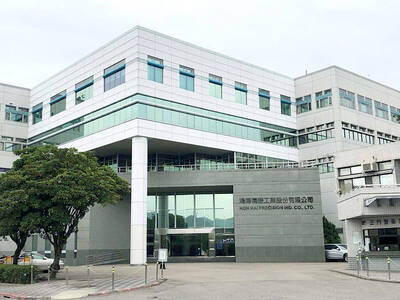Hong Kong phone company China Motion Telecom (潤迅通信) is to offer lower-rate mobile service over Far EasTone Telecommunications Co's (遠傳電信) network for Taiwanese expatriates in China, company officials said in Taipei yesterday.
China Motion is the second telecommunications firm, after Taipei-based Hicall Telecom Co (南屏電信), to receive a so-called Mobile Virtual Network Operator (MVNO) license to provide phone services via renting bandwidth from existing telecom operators.
"We know competition in Taiwan's telecom market is pretty stiff, but we are eyeing a niche market, different from existing mobile players," said Li Bin (李彬) executive director of China Motion, dispelling suspicions the company wants to make profits by simply providing voice call services.
Businesspeople traveling around the Greater China area will be China Motion's target market.
The company calculates that around 2 million Taiwanese people travel regularly across the Strait, with their monthly phone bills ranging around NT$500 to NT$600 higher than average users, deputy general manager Hurman Mok (莫志良) said.
"Besides, prices do matter. Our services will help users save expensive roaming charges by transferring calls to our Chinese and Hong Kong units," Lin said.
China Motion is offering up to 75 percent lower tariffs for users calling China or Hong Kong than local cellular operators charge now, he said.
The Hong Kong-based telecom operator charges its users NT$6.3 per minute for calls to China, compared to an average NT$25 per minute charged by Taiwan's mobile carriers, Mok said.
Different packages for China Motion's mobile service are now available in Taiwan, with rates ranging from NT$133 to NT$1333 per month.
The company said it secured 100,000 subscribers over the last two years in Hong Kong, where competition is more severe than in Taiwan.
Late 2003, MVNO pioneer Hicall Telecom started offering the service on KG Telecommunications Co (和信電訊), which is merged into Far EasTone last year. In almost one-year operation, Hicall has about 100,000 users now out of the nation's 23-million mobile users, the company said.

Shares in Taiwan closed at a new high yesterday, the first trading day of the new year, as contract chipmaker Taiwan Semiconductor Manufacturing Co (TSMC, 台積電) continued to break records amid an artificial intelligence (AI) boom, dealers said. The TAIEX closed up 386.21 points, or 1.33 percent, at 29,349.81, with turnover totaling NT$648.844 billion (US$20.65 billion). “Judging from a stronger Taiwan dollar against the US dollar, I think foreign institutional investors returned from the holidays and brought funds into the local market,” Concord Securities Co (康和證券) analyst Kerry Huang (黃志祺) said. “Foreign investors just rebuilt their positions with TSMC as their top target,

REVENUE PERFORMANCE: Cloud and network products, and electronic components saw strong increases, while smart consumer electronics and computing products fell Hon Hai Precision Industry Co (鴻海精密) yesterday posted 26.51 percent quarterly growth in revenue for last quarter to NT$2.6 trillion (US$82.44 billion), the strongest on record for the period and above expectations, but the company forecast a slight revenue dip this quarter due to seasonal factors. On an annual basis, revenue last quarter grew 22.07 percent, the company said. Analysts on average estimated about NT$2.4 trillion increase. Hon Hai, which assembles servers for Nvidia Corp and iPhones for Apple Inc, is expanding its capacity in the US, adding artificial intelligence (AI) server production in Wisconsin and Texas, where it operates established campuses. This

H200 CHIPS: A source said that Nvidia has asked the Taiwanese company to begin production of additional chips and work is expected to start in the second quarter Nvidia Corp is scrambling to meet demand for its H200 artificial intelligence (AI) chips from Chinese technology companies and has approached contract manufacturer Taiwan Semiconductor Manufacturing Co (TSMC, 台積電) to ramp up production, sources said. Chinese technology companies have placed orders for more than 2 million H200 chips for this year, while Nvidia holds just 700,000 units in stock, two of the people said. The exact additional volume Nvidia intends to order from TSMC remains unclear, they said. A third source said that Nvidia has asked TSMC to begin production of the additional chips and work is expected to start in the second

US President Donald Trump on Friday blocked US photonics firm HieFo Corp’s US$3 million acquisition of assets in New Jersey-based aerospace and defense specialist Emcore Corp, citing national security and China-related concerns. In an order released by the White House, Trump said HieFo was “controlled by a citizen of the People’s Republic of China” and that its 2024 acquisition of Emcore’s businesses led the US president to believe that it might “take action that threatens to impair the national security of the United States.” The order did not name the person or detail Trump’s concerns. “The Transaction is hereby prohibited,”